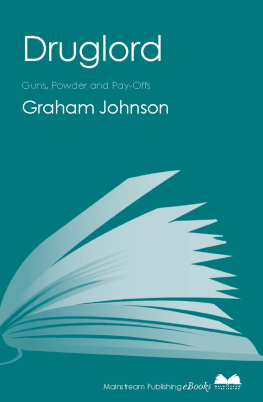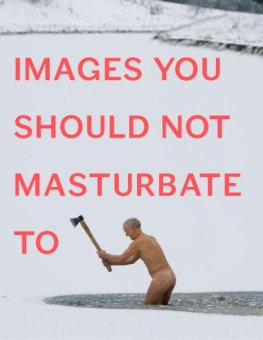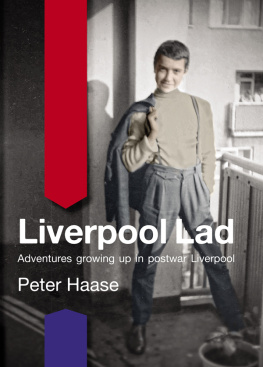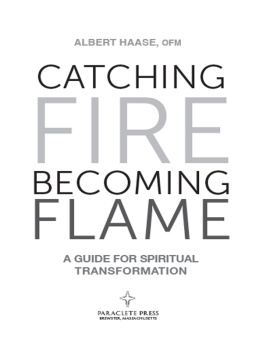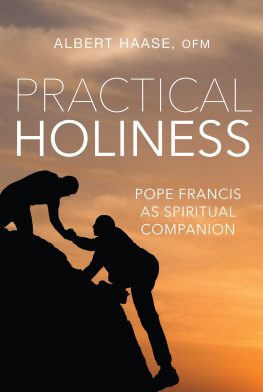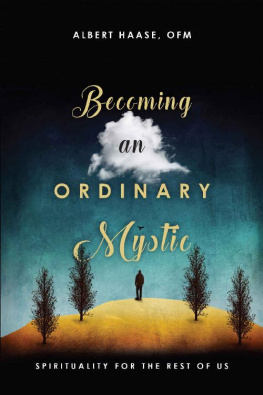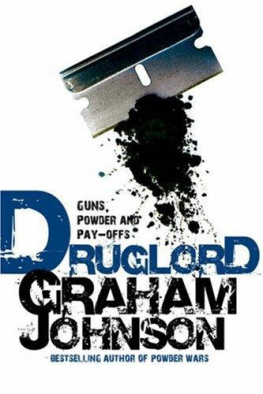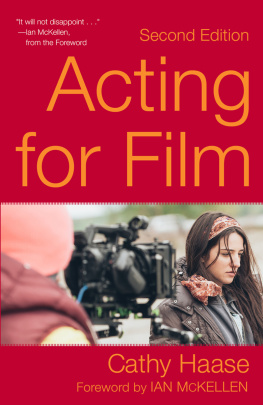About the Author
Graham Johnson is former investigations editor at the Sunday Mirror newspaper. His first book was the bestseller Powder Wars: The Supergrass Who Brought Down Britains Biggest Drug Dealers. He is also the author of Football and Gangsters: How Organised Crime Controls the Beautiful Game.
NOTE: Several individuals in this book, who took part in very serious crimes, have not been named. Their identities cannot be revealed for legal and security reasons. In such cases, they have been given false names. However, their real identities are known to the author and the authorities.
Druglord contains an account of John Haases criminal experiences given by Haase himself. The information was gathered in a taped interview with Haase at Whitemoor prison, during which he swore an affidavit. Both the author, Graham Johnson, and Liverpool Walton MP Peter Kilfoyle were present. Haase made the confession freely and without duress in the hope that he would receive credit from the authorities, possibly in the form of a reduced sentence, even though no guarantees were ever made.
Some of the quotes attributed to Haase about his background and childhood are extracted from interviews he gave to the Liverpool Echo and Daily Post newspapers.
First-hand accounts from other sources quoted in this book were gained in a variety of ways, including formal interviews, covert surveillance and witness statements.
DRUGLORDGUNS, POWDER AND PAYOFFSGraham Johnson
This eBook is copyright material and must not be copied, reproduced, transferred, distributed, leased, licenced or publicly performed or used in any way except as specifically permitted in writing by the publishers, as allowed under the terms and conditions under which it was purchased or as strictly permitted by applicable copyright law. Any unauthorised distribution or use of this text may be a direct infringement of the authors and publishers rights and those responsible may be liable in law accordingly.
Epub ISBN: 9781845968953
Version 1.0
www.mainstreampublishing.com
This edition, 2007
Copyright Graham Johnson, 2006
All rights reserved
The moral right of the author has been asserted
First published in Great Britain in 2006 by
MAINSTREAM PUBLISHING COMPANY (EDINBURGH) LTD
7 Albany Street
Edinburgh EH1 3UG
ISBN 9781845962401
No part of this book may be reproduced or transmitted in any form or by any other means without permission in writing from the publisher, except by a reviewer who wishes to quote brief passages in connection with a review written for insertion in a magazine, newspaper or broadcast
A catalogue record for this book is available from the British Library
PART ONE
HEROIN DEALING
PART TWO
THE GUN/POWDER PLOT
PART THREE
SCANDAL, CONSEQUENCES AND CONSPIRACY THEORIES
INTRODUCTION THE GREATEST ESCAPE
On 3 July 1996, Britains biggest drug dealer, John Haase, was secretly released from prison by Royal Pardon after serving just 10 months and 13 days of an 18-year sentence for heroin trafficking. His nephew and partner-in-crime, Paul Bennett, was also freed as part of the same deal. More than 17 years had been wiped off their prison terms overnight an unprecedented act in over 1,000 years of British judicial history.
The decision had been brokered by the highest powers in the land, a Holy Trinity of senior lawmakers and enforcers: Customs and Excise, a top judge and home secretary Michael Howard, who went on to lead the Conservative Party into a general election. Nothing like it had ever happened before, and, not surprisingly, the extraordinary event was shrouded in secrecy. The big question was, and still is, why did it happen?
The official explanation was simple, but again kept under wraps: Haase and Bennett had turned supergrass while in prison and their freedom was a reward for disclosing sensitive information about the underworld to Customs and Excise and the police that enabled crimes to be solved. Unfortunately for the authorities, the story leaked out despite the governments attempt to prevent newspapers, TV and MPs from talking about it immediately scandalising Michael Howard and raising a series of important issues. The questions thrown up were the key to unravelling the mystery, because the answers, piece by piece, led politicians and journalists closer to the full, astonishing truth.
The first question posed by an MP was the most obvious: why was the government putting the public at risk by freeing from jail two of the most dangerous criminals in Britain? Haase and Bennett were no ordinary villains they were top-five UK gangsters who trafficked drugs on an industrial scale and ran guns as proficiently as the IRA. The serious threat to public safety was blindingly self-evident. Blood-curdling violence, kidnappings and torture were their stock-in-trade. They were rootin-tootin, shoot-em-up outlaws as ruthless as anything that had come out of London, Chicago, Moscow or Sicily in the last 50 years. Before his capture, Haase was the UK kingpin of the Turkish Connection, a gang that pioneered the mass importation of cheap Afghani heroin across southern Europe and into Britain. During his reign between 1991 and 1993, the gang had flooded the streets with Class A drugs, triggering the first measurable drug epidemic in the UK, quickly followed by an exponential rise in the number of drug addicts. Haases outfit was Sigma Six efficient; it did for opium what Motorola and Vodafone had done for mobile phones. It was the first to replace piecemeal heroin smuggling with systematic mass importation. Under his instruction, regular 100-kilo loads poured into the UK, causing the market to reach saturation point quickly, which led to the biggest single fall in the kilo price of heroin on Britains streets ever. Allowing Haase back onto the streets was to unleash a vicious, one-man crimewave back onto an unsuspecting public. Granting his freedom was tantamount to government-sponsored organised crime.
The second question raised on the front pages of several national newspapers was more political: why was hang-em and flog-em home secretary Michael Howard putting his career at risk by freeing exactly the type of criminal he had sworn to stamp out? Why was he blatantly going back on his right-wing prison works policy, putting the credibility of Prime Minister John Majors government on the line with a scandalous decision, ahead of a general election?
Howard was a Tory golden boy who had made his name as a hard-line crime fighter. He had come to the Home Office job on a ticket of longer prison sentences for drug dealers and violent criminals. He had rallied the grass-roots membership in a series of vote-catching law-and-order speeches at conferences. Destroying Haase and Bennetts gang was the biggest single success that Customs and Excise had ever achieved against international heroin traffickers. To authorise Royal Pardons for them was an unusual U-turn for Howard that would not go down well with the blue-rinse brigade. So what exactly had motivated him to do it?
The plot thickened when the Sunday Mirror newspaper unearthed a remarkable link between Haases underworld gang and Howard. Astonishingly, Howard had a relative in Liverpool who knew Haases mob bosses and had allegedly been in touch with Haase himself in the days following his release from prison. The mans name was Simon Bakerman. He was Howards cousin. He even carried a picture of the home secretary in his wallet. He was also a cocaine-snorting drug dealer and petty criminal with strong connections to Haases Liverpool 8 gangland manor. It is unclear whether Bakerman had known Haase personally

